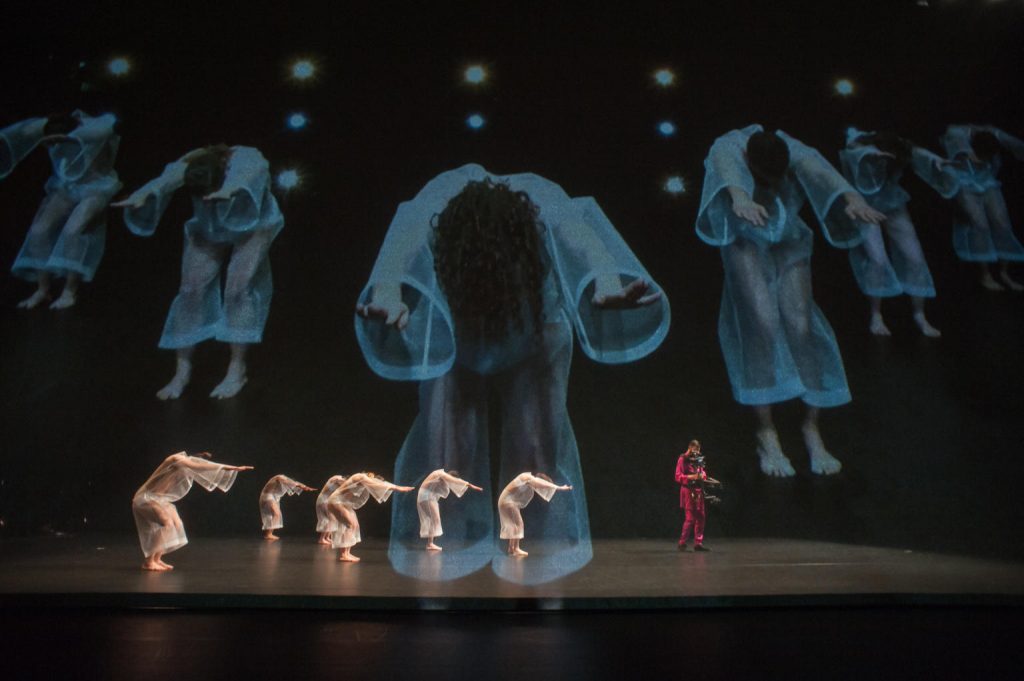Technologically impressive, with a fascinating sci-fi concept that ultimately falls short when searching for depth or meaning. Tesseract is divided into two halves like many pieces of conventional theatre, yet more unconventionally, Tesseract’s first act is a 3D film, the second a live performance. Armed with 3D glasses, Charles Atlas’s film exhibits incredibly impressive visuals, the clarity and scope makes for an immersive experience. For want of better terminology, the performers look as though they are truly popping out of the screen in such clear lucidity, far more-so than any 3D cinema experience.

The film itself is a love-letter to classic sci-fi, the opening segment reminds one of Stanley Kubrick’s 2001 Space Odyssey, or equally going by the performer’s costumes, perhaps Leeloo from Luc Besson’s Fifth Element. The homages continue as the film progresses, each section exploring experimental movement whilst the camera weaves and follows the performers, as if it follows a choreography of its own. Some segments a peaceful lull, others aggressive and psychedelic. However, albeit intriguing, this is where Tesseract becomes problematic, visually appealing but lacking in any coherent thread except that of it’s sci-fi roots.
The second act is choreographed by Rashaun Mitchell and Silas Riener, the blend of technology and performance is slick as the audience are separated from the performers by a near transparent screen that displays projections of shapes, lines and the performers themselves. The projections offer angles of the impressive choreography which would normally be inaccessible to an audience, aerial views from above, close-up shots and so on. The visuals go further in distorting the performers, psychedelic and colourful effects play with tempo and pacing, abstract coloured lines replace the dancers, and moments are frozen temporarily on screen, a tableau amongst a sea of motion.
Despite the impressive blend between reality and technology, the second act has similar drawbacks to its cinematic predecessor. The focus seems to solely lie with this technological blend, the actions on stage lack significance, you get lost trying to interpret some form of dramaturgical cohesion or meaning where there appears to be none.
One aspect of the production that is highly notable is the music throughout both acts, Fennesz the first, Mas Ysa the second. The soundtrack matches the tone of the piece, aiding in creating an immersive and atmospheric sci-fi experience.
Tesseract is part of the Barbican’s 2019 season, Life Rewired. 3/5
Review written by Daniel Elliman.
Tesseract is currently showing until Saturday 2nd March 2019 at The Barbican. To find out more about the production, visit here…


Leave a Comment